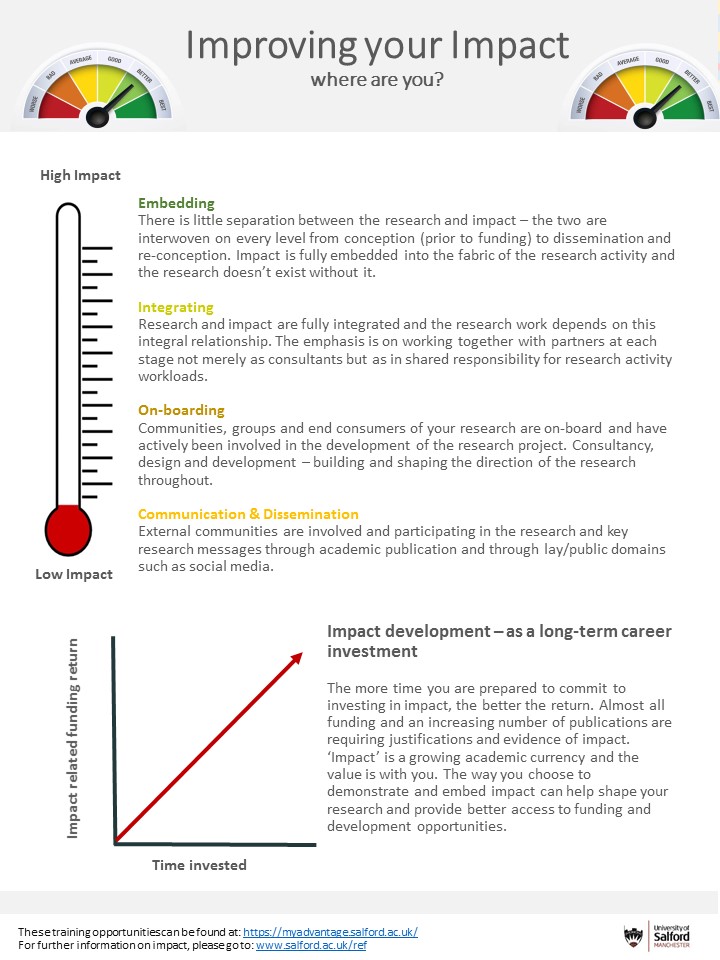When you have applied for research funding in the past, for example through a Research Council, you will probably have been asked to consider the impact of your research by completing an impact summary and also a more detailed pathways to impact document. This provides information on the actions that will be taken to increase the chances of your research findings reaching key beneficiaries.
However, this is all about to change with a recent announcement by UK Research and Innovation that as from 1 March 2020 all applicants to UKRI – including the Research Councils – will no longer be required to provide either a pathways to impact plan or an impact summary.
This change has come about to reflect the fact that the research and innovation landscape has shifted since the implementation of ‘pathways to impact’ plans over a decade ago. It is now recognised that impact is a core consideration throughout the grant application process, therefore removing the need for separate impact sections. This will also streamline the process for applicants.

Why is impact important?
Imagine research that has no purpose. Why would you be funded? What would be the point? Impact is an integral part of all funding applications because it is an important way of ensuring accountability for the use of public funds and demonstrating a real-world benefit beyond academia.
Many researchers leave the impact sections of their applications until last because they are unsure where to begin. Many academics are unclear what to include or may not understand what is classed as impact. Others may simply be unsure how to evidence impact.
Once you have a research idea, you should start by thinking about:
- What do you hope to achieve with it?
- Who is likely to benefit from your research?
- How are they likely to benefit?
- How are you going to reach this group and ascertain how your research has affected them?
In order to demonstrate how you will maximise the potential impacts of your research, you will still need to think about your pathways to impact, i.e. what activities you will undertake and what steps you intend to take to obtain the necessary evidence to show that impact is taking place.
It is important that you actively engage relevant users of research and stakeholders as soon as possible and continue with relationship-building throughout the life of a project and beyond.
For advice about how to integrate an impact plan into any new research funding applications you may be considering, please speak to Emma Sutton, Impact, Engagement and Environment Coordinator by e-mailing research-impact@salford.ac.uk